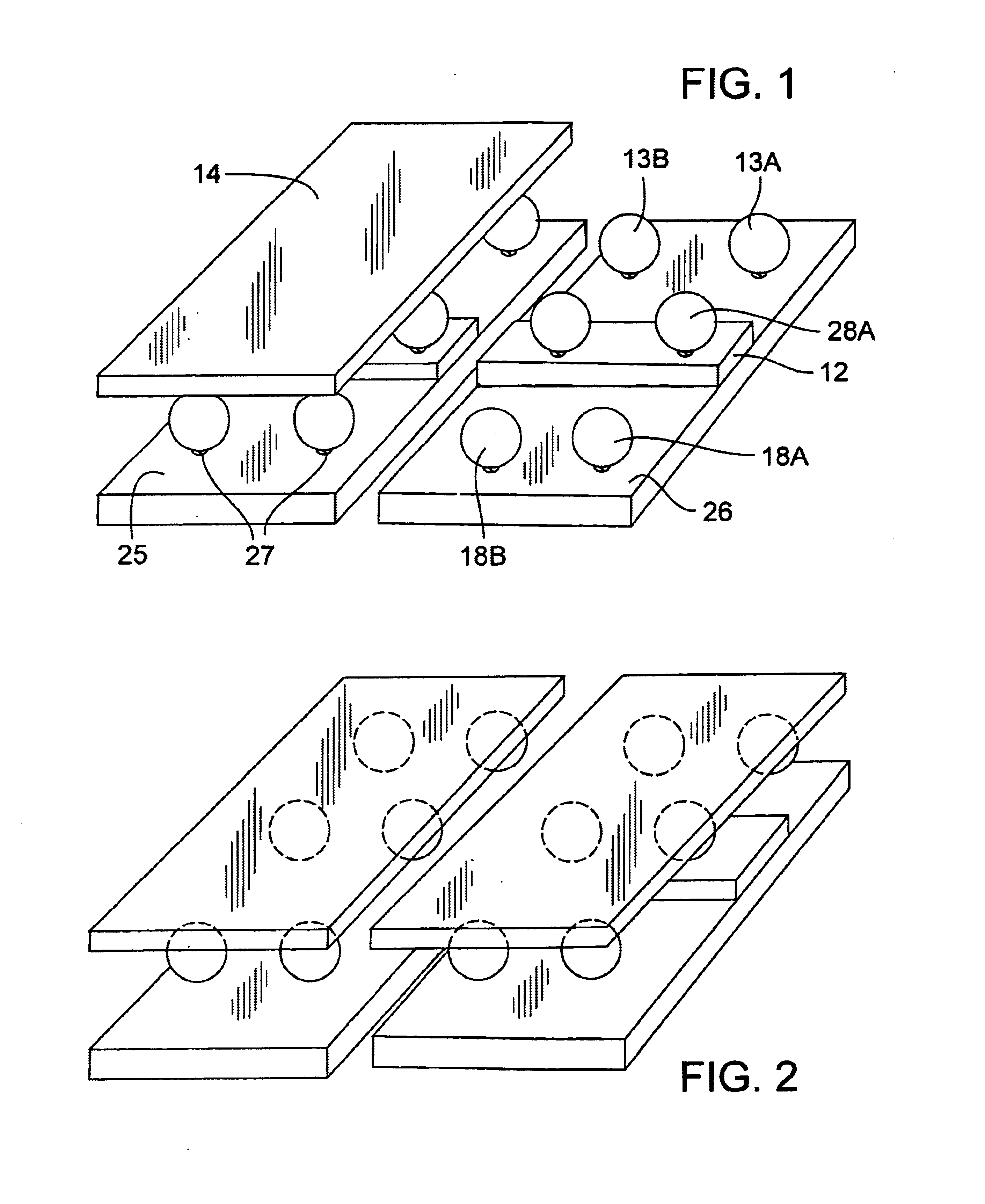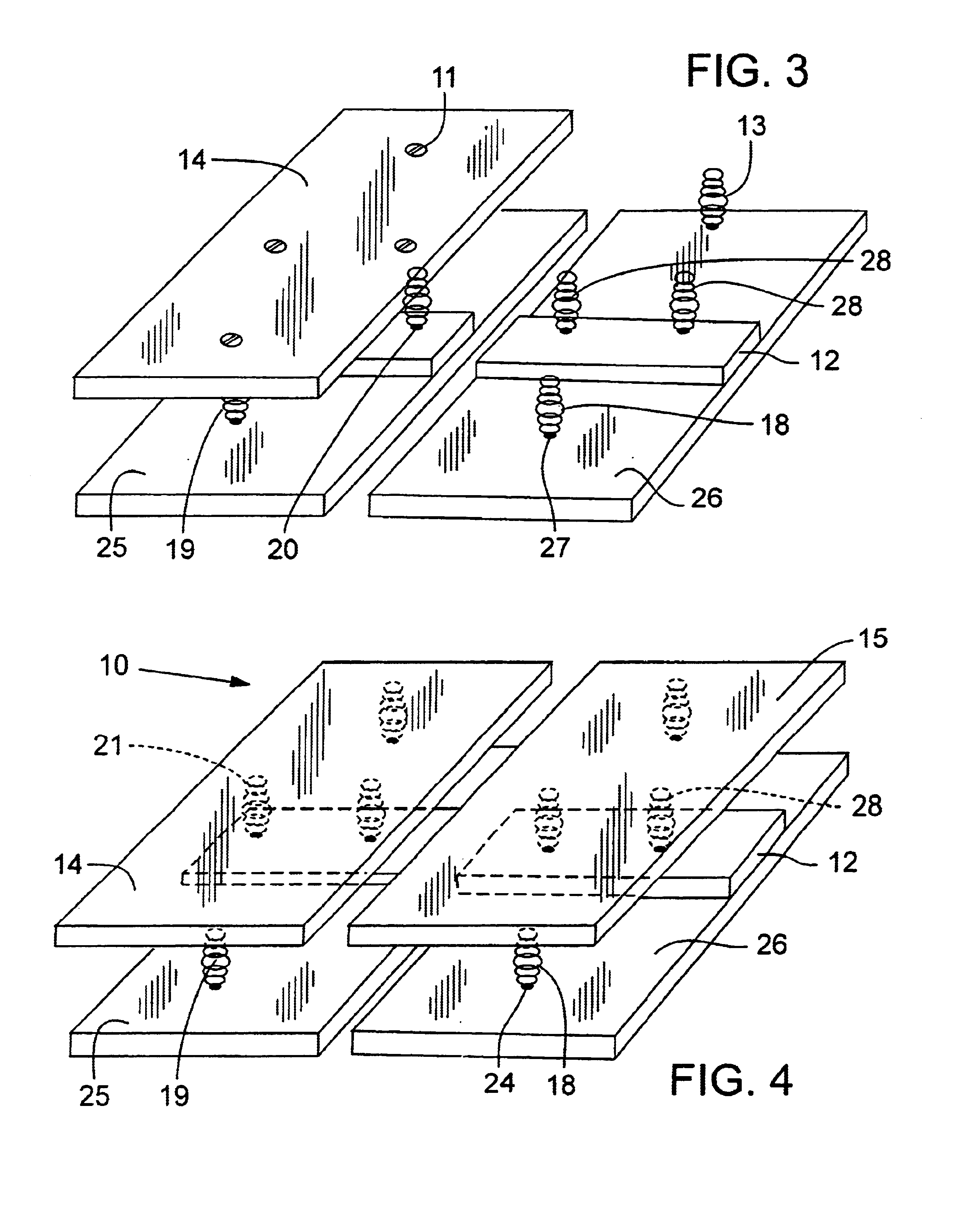Spinal glide ergonomic chair seat and pelvic stabilizer
a technology of ergonomic chair and pelvis stabilizer, which is applied in the field of ergonomic chair, can solve the problems of not allowing the three pelvis bones to move, affecting the movement of the pelvis, so as to prevent back pain and stiffness, enhance the motion of walking, and enhance the pelvis. the effect of motion
- Summary
- Abstract
- Description
- Claims
- Application Information
AI Technical Summary
Benefits of technology
Problems solved by technology
Method used
Image
Examples
Embodiment Construction
The ergonomic chair seat and standing device of the invention is a movable two sided seat that allows the reciprocal gliding of the two iliac bones of the pelvis. FIG. 1 shows the chair with one cushion 15 removed revealing the under rubber or plastic balls 13 A &B, 16, 17 and 18 A & B with balls 28 A & B and 29 on a ¼″ or ⅜″ platform 12 made of plywood or plastic. Each of the balls is attached to the base portion 25 and 26 by glue 27 or in the case of round springs by a bolt, FIG. 3 #27. The base of the chair 26&27 can be made of plastic, plywood, or aluminum. In FIGS. 1 and 2 the balls are attached to the under surface of the upper seat by glue on the platform and by glue and a ¼ to ½ plastic spacer or foam, 27b, to balance out the raised platform and allow the seat to glide.
FIG. 3. shows the same chair seat with round springs. The springs are round, not typical straight coils springs as seen in other chairs, the round spring provide a roll of the assembly. Enough so that the top ...
PUM
 Login to View More
Login to View More Abstract
Description
Claims
Application Information
 Login to View More
Login to View More - R&D
- Intellectual Property
- Life Sciences
- Materials
- Tech Scout
- Unparalleled Data Quality
- Higher Quality Content
- 60% Fewer Hallucinations
Browse by: Latest US Patents, China's latest patents, Technical Efficacy Thesaurus, Application Domain, Technology Topic, Popular Technical Reports.
© 2025 PatSnap. All rights reserved.Legal|Privacy policy|Modern Slavery Act Transparency Statement|Sitemap|About US| Contact US: help@patsnap.com



